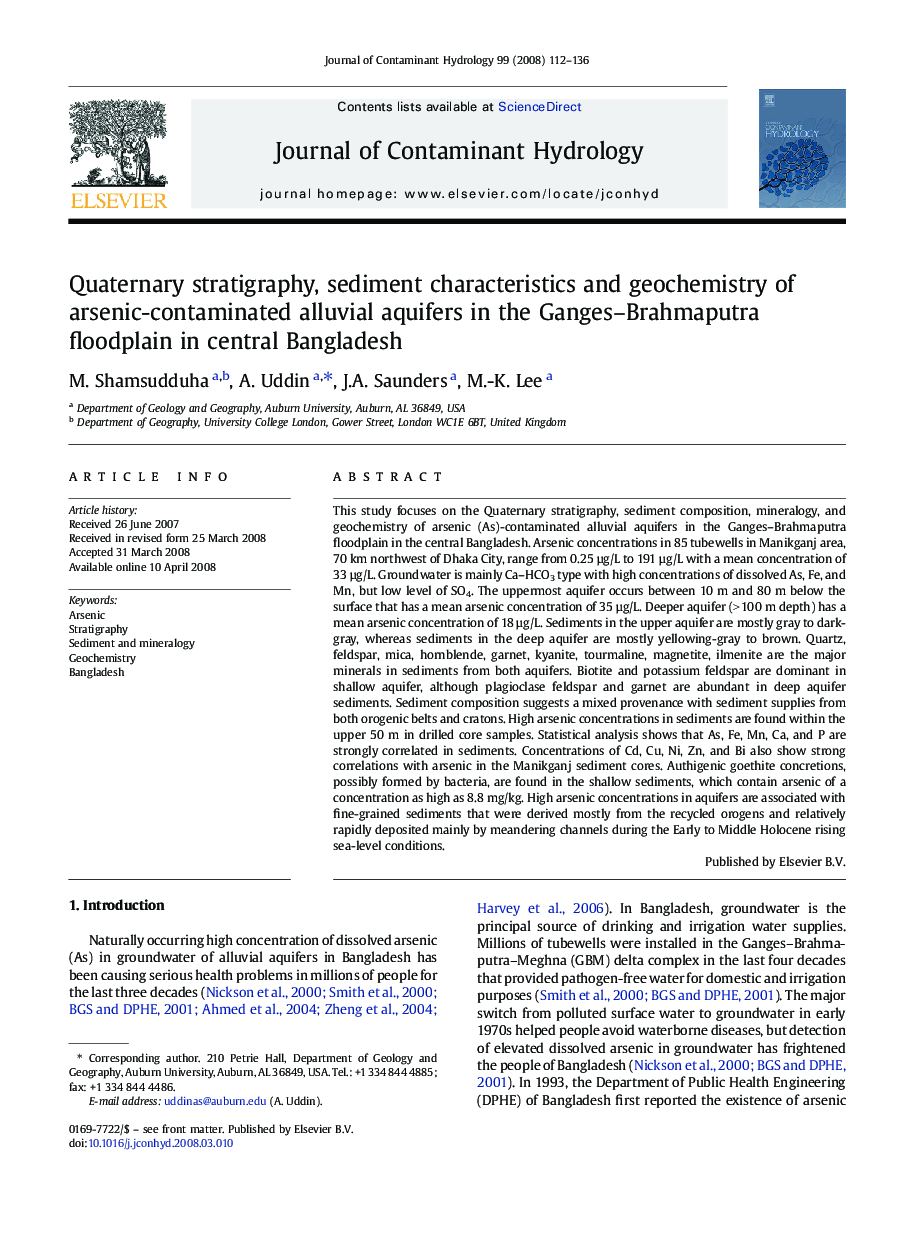| کد مقاله | کد نشریه | سال انتشار | مقاله انگلیسی | نسخه تمام متن |
|---|---|---|---|---|
| 4547482 | 1627111 | 2008 | 25 صفحه PDF | دانلود رایگان |

This study focuses on the Quaternary stratigraphy, sediment composition, mineralogy, and geochemistry of arsenic (As)-contaminated alluvial aquifers in the Ganges–Brahmaputra floodplain in the central Bangladesh. Arsenic concentrations in 85 tubewells in Manikganj area, 70 km northwest of Dhaka City, range from 0.25 µg/L to 191 µg/L with a mean concentration of 33 µg/L. Groundwater is mainly Ca–HCO3 type with high concentrations of dissolved As, Fe, and Mn, but low level of SO4. The uppermost aquifer occurs between 10 m and 80 m below the surface that has a mean arsenic concentration of 35 µg/L. Deeper aquifer (> 100 m depth) has a mean arsenic concentration of 18 µg/L. Sediments in the upper aquifer are mostly gray to dark-gray, whereas sediments in the deep aquifer are mostly yellowing-gray to brown. Quartz, feldspar, mica, hornblende, garnet, kyanite, tourmaline, magnetite, ilmenite are the major minerals in sediments from both aquifers. Biotite and potassium feldspar are dominant in shallow aquifer, although plagioclase feldspar and garnet are abundant in deep aquifer sediments. Sediment composition suggests a mixed provenance with sediment supplies from both orogenic belts and cratons. High arsenic concentrations in sediments are found within the upper 50 m in drilled core samples. Statistical analysis shows that As, Fe, Mn, Ca, and P are strongly correlated in sediments. Concentrations of Cd, Cu, Ni, Zn, and Bi also show strong correlations with arsenic in the Manikganj sediment cores. Authigenic goethite concretions, possibly formed by bacteria, are found in the shallow sediments, which contain arsenic of a concentration as high as 8.8 mg/kg. High arsenic concentrations in aquifers are associated with fine-grained sediments that were derived mostly from the recycled orogens and relatively rapidly deposited mainly by meandering channels during the Early to Middle Holocene rising sea-level conditions.
Journal: Journal of Contaminant Hydrology - Volume 99, Issues 1–4, 29 July 2008, Pages 112–136